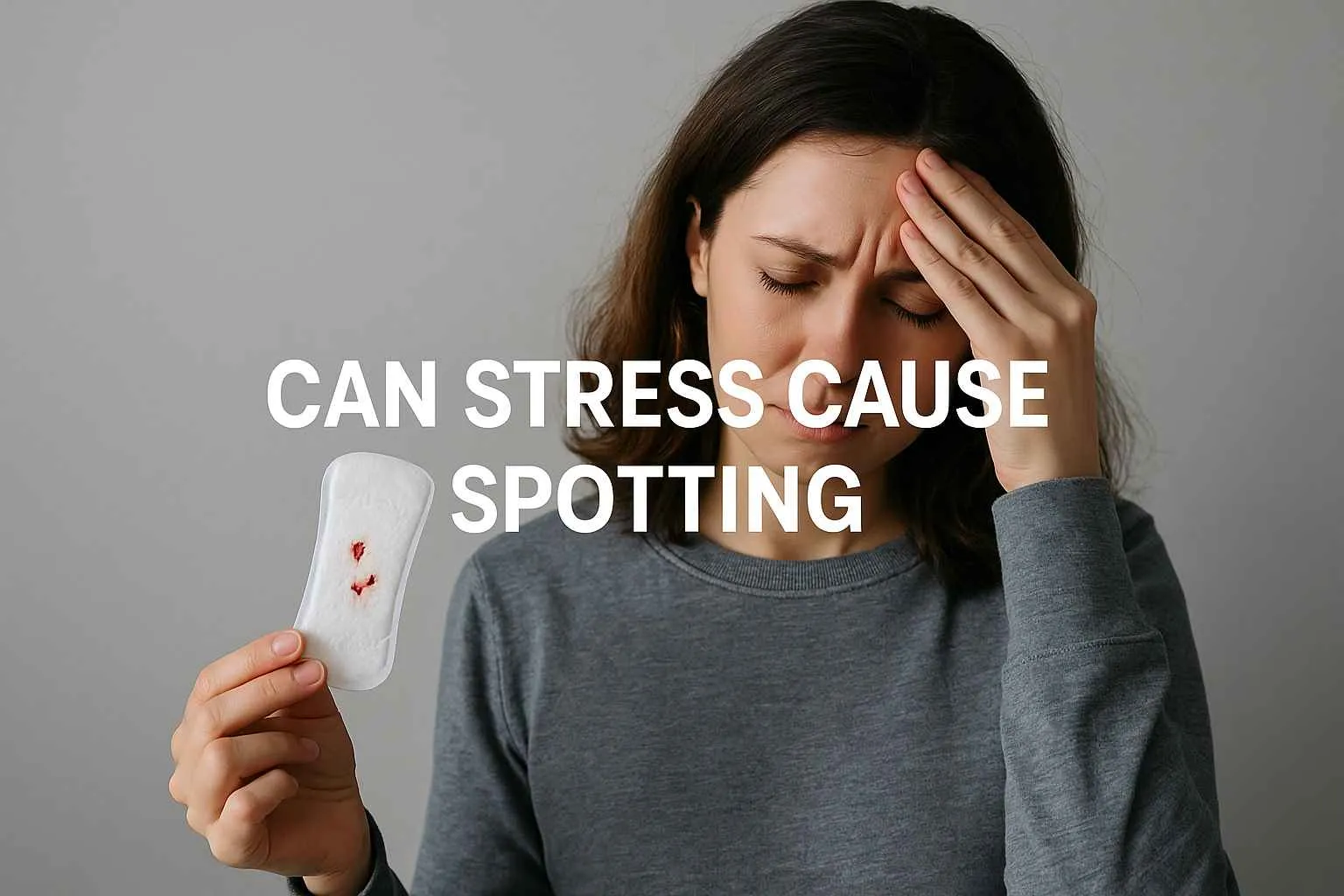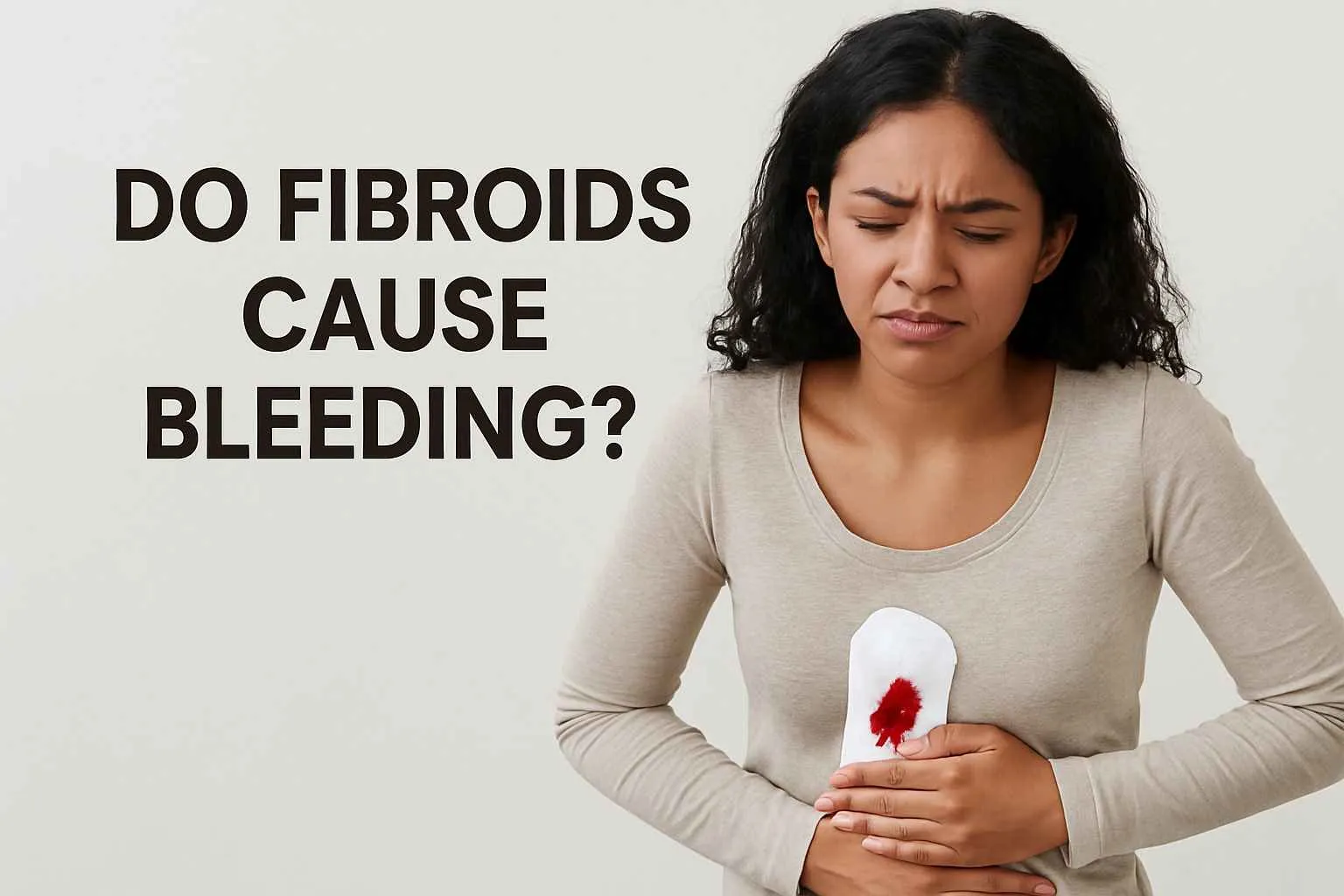Experiencing brown discharge after your period can be unsettling and leave you with more questions than answers. Is it normal? Should you be concerned? Understanding what’s happening in your body is the first step toward finding a solution. In this article, we’ll learn how to stop brown discharge after period and tips to manage it naturally. Read on!
How to Stop Brown Discharge After Periods: 6 Strategies to Consider
Here are some effective home remedies to address brown discharge naturally:
1. Maintain Good Genital Hygiene
First, practicing good hygiene is essential for your overall health. So, keep your vaginal area clean and dry to lower the risk of infections that can lead to brown discharge.
What to do:
Start by washing with warm water and unscented soap. Then, use a clean cloth to dry the area gently. Additionally, avoid douching as it can disturb the natural pH balance of your vagina. For instance, douching involves using liquid solutions to clean but can harm your vaginal health. Moreover, it’s best to avoid fragranced tampons since they also disrupt the natural flora.
2. Practice Protected Sex
Practice protected sex with condoms as condoms create a physical barrier and prevent the spread of sexually transmitted infections (STIs) and bacterial vaginosis (BV), both of which contribute to brown discharge.
Also, safe sexual activities help maintain a healthy environment of the vagina, lowering the risk of abnormal vaginal discharge.
3. Use Lubricants
If the brown discharge is due to discomfort from sex, use lubricants that help reduce friction between vaginal walls and penis, making sexual intercourse more easy and comfortable.
On the other hand, if discharge is related to vaginal dryness, lubricants can protect vaginal tissues from tears during sex which leads to bleeding and brown discharge.
4. Switch Hormonal Birth Control Pills
Sometimes, hormonal birth control pills can change the natural menstrual cycle of the body, which can lead to irregular periods, causing brown discharge.
Also, these pills have lower estrogen levels, which may lead to the breakdown of the uterine lining, which causes brown discharge. So, in such situations, consult a gynecologist for different pills.
5. Consume Probiotics
Research shows that eating probiotic-rich foods can help introduce beneficial bacteria such as lactobacilli in the gut which prevent the growth of bacteria that cause vaginal infections like STIs and BV.
This helps restore the natural vaginal flora and lower the amount of brown discharge. So, eat probiotic-rich foods like yogurt, kefir, and sauerkraut and probiotic supplements under a doctor's guidance.
6. Maintain Thyroid Levels
Sometimes, hypothyroidism can be the cause of brown discharge, and in addition, it can lead to thinning of the uterine lining, which can also contribute to brown discharge.
So, managing hypothyroidism with the help of thyroid hormone replacement therapy can regulate the periods and prevent discharge.
Conservative Methods to Stop Brown Discharge after Periods
Experiencing brown discharge after a period is normal. It often happens as leftover blood from the uterus clears out. If you notice brown discharge after periods, a few things at home can help. Let’s explore some easy tips worth considering:
Drink enough water to stay hydrated.
Exercise or try yoga to support overall wellness.
Eat a balanced diet to support better body function and overall health.
Additionally, never douche, as it can upset the natural balance of your vaginal area.
Moreover, avoid using perfumes, soaps, or sprays near sensitive areas to reduce irritation.
For instance, urinating after sex helps prevent infections by flushing out bacteria.
Also, wear breathable underwear to allow for comfort and proper ventilation.
Furthermore, change out of wet clothes quickly to avoid irritation.
Then, use a clean cloth or soft tissue to dry the area gently after washing.
In addition, avoid wearing tight clothes that may cause discomfort or restrict airflow.
Taking regular baths is another way to stay fresh and support vaginal health.
Finally, address any medical conditions with a healthcare provider to help prevent brown discharge.
If brown discharge lasts for over one week and is accompanied by a bad smell or pain, visit a gynecologist. It may indicate some underlying health issues that need proper diagnosis like blood test and pap smear and effective treatment.
Diagnosis of Brown Discharge
Firstly, the gynecologist will ask about the timing and frequency of your periods, along with accompanying symptoms. Then, these diagnostic methods will be used:
Pelvic Examination: Used to examine the visible symptoms of infections, growths, and other abnormalities in the cervix or vagina.
Pap Smear: Checks for cervical cancer and can identify any abnormal cancerous cells if present in the cervix.
Ultrasound: Helps look at the uterus, ovaries, and all the surrounding tissues and suspect issues like polyps, uterine fibroids, ovarian cysts, or endometriosis.
Blood Tests: Check the levels of hormones in case of hormone imbalance-associated issues like polycystic ovary syndrome or perimenopause.
Swab Test: Detects STIs or bacteria by testing yeast, bacteria, and other microorganisms which are taken from the vagina.
Professional Treatments for Brown Vaginal Discharge
Brown discharge resolves on its own after a few days. However, if the cause is some underlying medical issues, then you need professional treatment. The healthcare providers may help with the following treatment options:
1. Medications
For vaginal infections, the gynecologist may prescribe the antifungals like clotrimazole, fluconazole, and miconazole.
For bacterial infections, they may provide antibiotics such as clindamycin and metronidazole.
Make sure to complete the full course of medication to ensure better results.
2. Hormonal Therapy
If hormonal imbalance is the cause of brown discharge, the providers may advise hormonal therapy to restore hormone levels and lower irregular spotting.
In case of low estrogen, which is causing persistent spotting, the doctors may recommend birth control pills with higher estrogen.
3. Surgical Intervention
If the cause of persistent brown discharge along with pain, bad odor, or fever is some underlying conditions such as uterine fibroids, polyps, endometriosis, or ectopic pregnancy, then the doctors may suggest surgery.
Symptoms of Brown Discharge
These symptoms suggest a need for medical attention:
A strong or unpleasant smell with the discharge
Burning sensation, itching, or soreness in or around the vaginal area
Lengthy or heavy spotting
Pain during sexual intercourse
Consistent pelvic pain
If these symptoms last longer, see a gynecologist to determine the exact cause.
Potential Causes of Brown Discharge
Knowing the cause of discharge early can make a difference in preventing the issue:
Hormonal imbalance: Too low estrogen or progesterone levels can lead to hormonal imbalance, causing spotting.
Birth control pills: Starting, missing, or stopping the doses of birth control pills might cause brown discharge.
Ovulation spotting: Around 5% of women experience spotting during the ovulation phase, as estrogen levels are high at this phase and drop later.
Infections: Vaginal infections like sexually transmitted infections (STIs) and bacterial vaginosis can contribute to unusual discharge due to overgrowth of bad bacteria.
Uterine fibroids: Non-cancerous growths of fibroids in the uterus might also cause irregular bleeding or brown discharge.
Polycystic ovary syndrome (PCOS): This hormonal disorder (that occurs in 1 out of 10 women) can cause irregular or infrequent periods, which can result in discharge.
Implantation: Implantation can also lead to brown discharge as it occurs when the fertilized egg attaches to the uterine lining, which breaks down some blood vessels and causes bleeding.
Endometriosis: This condition occurs when the tissue that is similar to the uterine lining grows outside the uterus and leads to brown discharge on shedding.
Perimenopause: The fluctuations in estrogen hormones during this period can lead to irregular brown spotting.
Tips To Maintain Vaginal Health
Maintaining vaginal health is important for overall well-being, and having a few essentials on hand can make all the difference. By choosing the right products and incorporating healthy habits, you can support comfort, prevent irritation, and promote balance.
Here are some must-haves for a healthy routine:
1. Use Cotton Underwear
Breathable and moisture-wicking cotton underwear helps prevent irritation and keeps you comfortable.
2. Use Gentle Cleanser
Use a mild, unscented soap or intimate wash for external use to avoid disrupting the natural balance.
3. Eat Probiotics
Adding yogurt or probiotic supplements to your diet can help support a healthy balance of vaginal flora.
4. Use Water-Based Lubricant
For comfort during intimacy and to reduce dryness, choose a water-based lubricant.
5. Use Menstrual Products
Opt for comfortable menstrual products like organic cotton tampons or menstrual cups.
6. Stay Hydrated
A reusable water bottle can help you stay hydrated, as drinking plenty of water supports overall health.
7. Opt For Healthy Snacks
Nutritious options like nuts or yogurt provide essential nutrients for a balanced diet.
8. Apply Moisturizer
If dryness is an issue, especially during menopause, a gentle vaginal moisturizer can help.
9. Use a pillow for Elevation while Sleeping
Using a pillow for elevation may be recommended by a healthcare provider to support pelvic health.
10. Use personal Hygiene Wipes
Unscented wipes offer freshness on the go when you need a quick refresh.
With these simple tips, you can support your vaginal health and maintain balance every day.
When to see a doctor?
As we have learned, brown discharge experienced after periods is usually normal and not concerning. However, sometimes it can also be due to some other serious issues. Immediately consult a doctor if you experience the following along with the brown discharge:
pelvic and abdominal pain
a strong odor
itching or burning sensation while urinating
severe vaginal bleeding
Fever
swelling or redness in the genital parts
Sore on your vagina
Summing Up
How to stop brown discharge after periods can be a major concern if it's causing discomfort. But, maintaining good vaginal hygiene, practicing protected sex, using lubricants, eating well, and switching birth control pills can help treat brown discharge. However, if the discharge lasts longer, see a gynecologist for proper diagnosis, as it can be due to underlying medical issues. The providers can help with effective treatment, like medications, hormonal therapy, or surgery.
Always follow exercise and a balanced diet to maintain the functionality of your organs. For personalized advice and more information, consult your gynecologist today.
أسئلة متكررة
Why do I have brown discharge after sex?
Brown discharge after sex could happen due to old blood, cervical irritation, or an infection. It’s best to consult a healthcare provider to be sure.
How to flush out brown discharge after period?
Brown discharge after your period is usually just old blood, and it will naturally flush out on its own.
How to stop brown spotting?
To reduce brown spotting, consult a healthcare provider to address the underlying cause, which could be hormonal imbalance, medication side effects, or other factors requiring specific treatment.
How many days does brown discharge come after the periods?
Most women experience brown discharge for a day or two after their periods. However, every woman’s body is different. It can also depend on your ovulation timing.
How can I prevent myself from brown discharge?
You can follow The tips mentioned above to stop brown discharge after periods.
What infection led to brown discharge?
Bacterial vaginosis or yeast infection can cause brown discharge.
What does brown discharge not on my period indicate?
Brown discharge outside your period may occur due to hormonal changes, implantation bleeding, or infections. Consulting a doctor can help with a clear diagnosis.
How to get rid of brown blood after period?
Brown discharge after your period is usually old blood. It will naturally clear out on its own over time.
How to stop brown discharge after period naturally?
Eat iron-rich foods, use a warm compress, stay hydrated, and practice light exercise. These steps can help naturally reduce brown discharge after your period.
Is it normal to have brown discharge two weeks after my period?
Brown discharge two weeks after your period could be a sign of implantation bleeding. However, it’s wise to consult your doctor to check for any other causes.
Can brown discharge be a sign of pregnancy?
Yes, it can be an early sign of pregnancy that occurs during implantation when the fertilized egg attaches to the uterine lining, which can cause bleeding or brown discharge.
كُتب بواسطة







